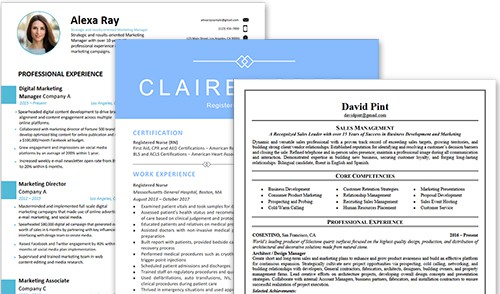What is the Difference Between a CV and a Resume
A resume is a pretty common term in the universe of Human Resources and job candidates. But a less familiar term, CV is sometimes requested in lieu of a resume. If you are unfamiliar with these two types of documents, it can be very confusing to figure out which one to use.

Generally speaking, a resume is an abbreviated snapshot of an individual’s career. It serves as a brief introduction that is easily skimmable during the candidate selection process. A CV or Curriculum Vitae is a comprehensive document that lists all of the details of an individual’s career.
Whether you need a CV or a resume, keep in mind that our online resume writing services are always here to help. Our team of team of writers can help you determine which job document you need and then work with you to craft the perfect resume or CV for your individual needs. Now moving on to the subject at hand….
What Exactly is a CV?
CV stands for ‘Curriculum Vitae,’ a Latin word that means ‘course of life’. It is a comprehensive document that details all of an applicant’s career details about past qualifications, competencies, experience, skills, and achievements.
A CV tends to be a longer document, averaging up to 20 pages and is more commonly used in the world of academics. If you plan to apply for a teaching or research position, a curriculum vitae will be your go-to document.
The key element of a CV is academic experience that establishes the candidate as an expert in their given field. A CV is more like a professional biography while a resume is more like an elevator pitch.
Types of CV’s
There are different types of CV’s and while most candidates stick with the traditional chronological format, there are situations in which a candidate might want to try something different.
Functional or Skill-based CV: This format puts the focus of the CV document on competencies and areas of expertise rather than past work history. It is most useful for entry-level job candidates and career changes.
Chronological CV: This format is most common and typically preferred by employers. It focuses on a chronological listing of work history and academic experience in date order. This format is suitable for those applying for positions in the same industry or field that would want to highlight the progression of their career. It is also useful for candidates who do not have a lot of accomplishments to list on their CV.
Combination CV: As the name indicates, this is a combination of functional and chronological formats. This format does not place particular importance on expertise over experience or vice versa. It is most suitable for senior-level job candidates who have a lot of accomplishments or steady progression in their career and it is beneficial to highlight both.
Academic CV: The academic world is a little different than other industries. In almost all cases, the CV should highlight research, publications, grants, fellowships, and professional affiliations.
What is a Resume?
By comparison, a resume is a quick overview of achievements from one person’s career. It is formatted in a way to be skimmable by human eyes and scannable by computer software. A resume touches on professional experience, skills, and academic background. But the total length should not exceed 1 or 2 pages.
A resume can be easily tailored to fit the job that a candidate is applying to. The focus of a resume is to highlight key hard and soft skills or keywords that candidate screening software will use as criteria to filter out applicants.
Types of Resumes
Resumes come in all different forms. What is best depends largely on the industry and type of job that the candidate is applying for. While most employers are most familiar with a functional format, there are situations in which it might be a good idea to put a different spin on it.
Chronological Resume: Focuses on work history in a chronological (by date) format. This format lists the most recent work history first and then progresses backward from that point.
Functional Resume: Focuses on skills and experience. Traditionally used by those who are changing careers or who have gaps in their employment. This format is becoming more popular as employers are increasingly interested in competencies and successes over positions.
Creative Resume: The use of color, infographics, or non-traditional formatting is more common in a creative resume. This format works best for creative professionals like graphic designers, artists, photographers and such.
The difference between a resume and CV is really in the length. A resume is a brief summary of skills and experience designed to be scannable. A CV is a detailed account of all skills and experience that provides a complete picture of a candidate’s expertise.
The type of job and industry that a candidate is applying for will determine which document is needed. Since resumes are more often tailored to the individual positions that the candidate is applying for, it might be useful for all candidates to maintain both a formal CV and a template for a resume.
